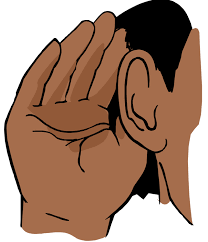AURAL TEST Grades 4 & 5

What is new in Grades 4 and 5?
When students take practical exams, part of the examination will include aural tests. This is the case for ALL instruments and the aural test is worth 18 marks (exams are 150 in total) Therefore, my pianists and flautists need to develop their aural skills. The tests involve listening and responding to music. In grade 4 aural tests, the melodies that should be sung back (or played back) are now longer, up to four bars. Candidates will also have to sing up to five notes from score in free time, intervals up to a 3rd. Grade 4 musicians will need to be able to listen to music played by the examiner and then describe dynamics, articulation, tempo, tonality; and also describe character. A bank of adjectives if useful for this test. There will also be a rhythmic excerpt played from the piece for the student to clap back and the examiner will then ask whether the music is in two time, three time or four time.
In grade 5 aural tests the sing backs will be slightly more difficult than grade 4 and the sight singing will be more notes and a wider range. Grade 5 aural test C will challenge the musician to describe the dynamics, articulation, tempo, tonality, character and now the style and period. At this level, candidates need to be familiar with various features from different periods of music such as Baroque, Classical Romantic etc.
**NOTE TO PARENTS** Please check the adverts that sometimes appears on websites and YouTube, they might not be suitable for children and young people. I have no control over what adverts may appear.
How do I improve my aural skills?
I cannot stress enough how helpful it is to sing in a choir as often as you can. This will improve confidence in using the voice and learning about harmony. It is also important to listen to a wide range of music, including classical, jazz, modern so that musicians develop knowledge of styles and periods. Classic FM radio is a good place to start. It is most certainly helpful to go and see live music events, it also inspires budding musicians.
There are no short cuts and it is unwise to neglect aural skills until only the weeks before an exam. In a weekly piano or flute lesson it is not possible to cover everything in every lesson, the learner must allow time each week to work on all aspects of musicianship. This includes aural training, music theory, sight reading, technical exercises, scales in addition to pieces.
Grade 4 Aural Tests ABRSM
Please see the following link for full grade 4 aural syllabus:
https://gb.abrsm.org/en/our-exams/what-is-a-graded-music-exam/aural-tests/
4a. To sing or play from memory a melody played twice by the examiner.
4b To sing five notes from score in free time. The candidate may choose to sing from treble or bass clef.
4c. (i) To answer questions about two features of a piece played by the examiner.
4c. (ii) To clap the rhythm of the notes in an extract from the same piece, and to identify whether it is in two time, three time or four time.
The following websites are helpful resources to practise the skills required in the test:
https://gb.abrsm.org/en/exam-support/preparation-for-exams/mock-aural-tests/
https://www.e-musicmaestro.com/auraltests/free/abrsm/test/grade4/4A
Test 4a: https://www.youtube.com/watch?v=WlCARx2x1Zo
Test 4b: https://www.youtube.com/watch?v=HjGqXNFwUBc
Test 4c: https://www.youtube.com/watch?v=XEuK3NdH5jA
TIPS FOR GRADE 4: https://www.youtube.com/watch?v=rs1_pab7akA
Grade 5 Aural Tests ABRSM
Please see the following link for full grade 5 aural syllabus:
https://gb.abrsm.org/en/our-exams/what-is-a-graded-music-exam/aural-tests/
5a. To sing or play from memory a melody played twice by the examiner.
5b. To sing six notes from score in free time.
5c. (i) To answer questions about two features of a piece played by the examiner. B
5c. (ii) To clap the rhythm of the notes in an extract from the same piece, and to identify whether it is in two time, three time or four time. T
The following websites are helpful resources to practise the skills required in the test:
https://gb.abrsm.org/en/exam-support/preparation-for-exams/mock-aural-tests/
https://www.e-musicmaestro.com/auraltests/free/abrsm/test/grade5/5A
Test 5a: https://www.youtube.com/watch?v=4HEIq9LwUbA
Test 5b: https://www.youtube.com/watch?v=eyNjEm2NnJ4&t=155s
Test 5c: https://www.youtube.com/watch?v=aBMATql5Ta4
More Test 5c: https://www.youtube.com/watch?v=FB4q_FKp8SQ
Learn about Baroque, Classical, Romantic, 20th Century and Jazz for test C on the following link. The suggested listening is an excellent start, please listen to the examples suggested. Make some notes and become familiar with the necessary vocabulary:
http://pianoteachernorthlondon.com/grades/aural-test-style-period-guide/
Recognising styles & Periods grade 5-8: https://www.youtube.com/watch?v=LbY16Cm0aNs

